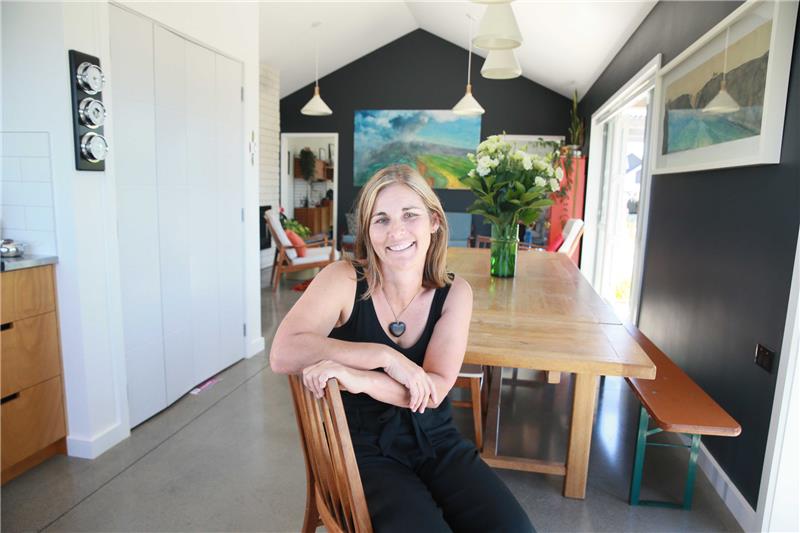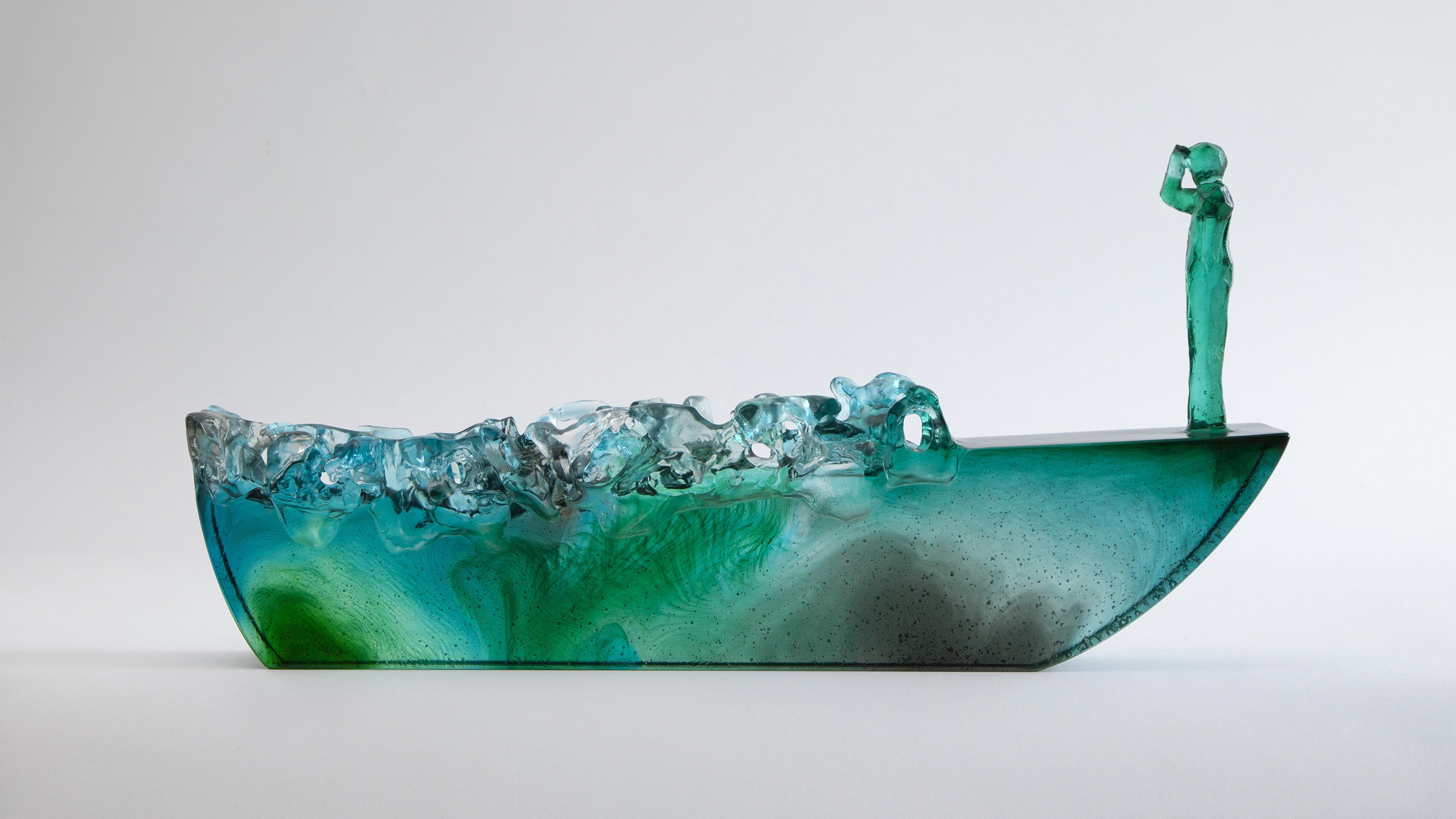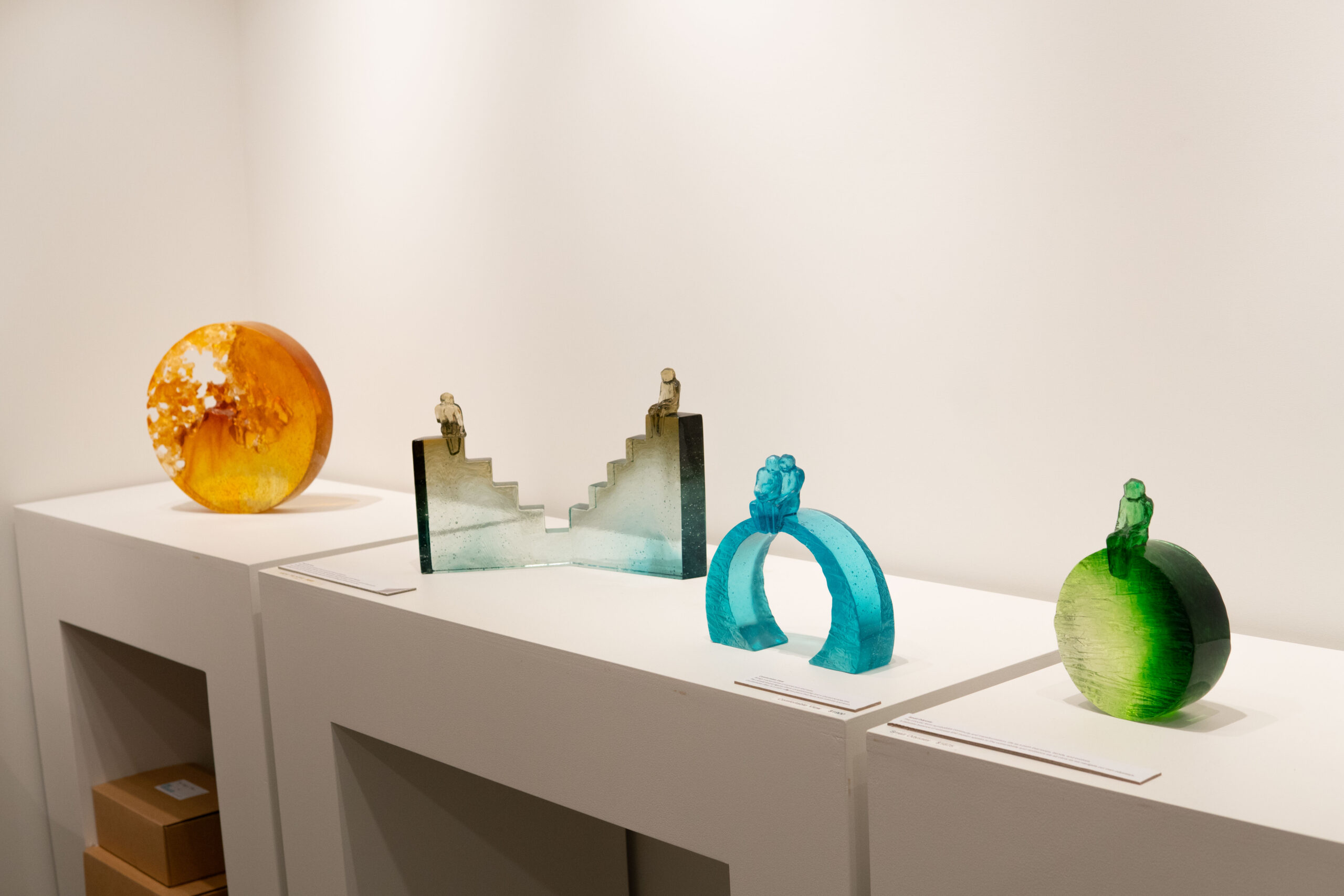
Di Tocker is a local cast-glass artist who currently resides in Cambridge. Her sculptural work focuses on form and colour, mimicking the scenery she sees on her national and international travels. Figures are also central to the storytelling in Di’s work; simplified bodies explore the connection between humans, relationships, and the environment.



My name is Di Tocker, the medium that I work in is cast glass, and I’ve been working in this way for 20 plus years.
I was 18 years old. I was taking a night class in stained glass, and I was about half an hour in and I thought, this is it. I enjoyed it so much—bought all the tools, made a lot of crap stuff, made a lot of really bad lamp-shades and windows.
I was working in glass as a stained glass artist, which is two dimensional glass, and I saw an advertisement in the newspaper for a Bachelor of Fine Arts majoring in glass, which I did not know existed. I got super excited and thought, “I have to do that”. So, I went to university.
Yes, I was quite exhausted after university, so I took five years off and did none (art). I had a couple of children and when I went back to it, I decided to become an artist when I didn’t want to return to full-time work and juggle that with being a mum. So, I decided working for myself would be better, and it was at that point that I pursued my art.
No. It’s too big a process. In a nutshell, the object that I want to make in glass I model in wax, I then build a refractory mould around the wax model, steam out the wax, measure out the glass according to how much wax was in it, put the mould in the kiln, put the glass in a terracotta pot with a hole in the bottom above the mould, switch on the kiln, let it cook for a minimum of one week to a month—depending on the size of the piece. When it’s cooled to room temperature, I take it out of the kiln, break the mould open, and polish the glass using lots of polishing equipment… Told you it wouldn’t fit in a sentence.
I have a Bachelor of Fine Arts majoring in glass.
Exceptionally. When I was first starting as an artist, I didn’t have a name and I was just trying to get my work into galleries. I had to supplement my income with teaching and having a BFA gave me kudos for teaching; people respect that and then they wanna come and do your classes. I think it also helps being an artist, people think that it’s important, but actually studio time is a lot more important than time at the university.
Having an exhibition is like walking down the street naked—It’s pretty much you bearing your soul. You have to get used to it. I did find it difficult. I found the criticism hard to take, but you have to realise that you will never please everybody, and if you don’t make art that comes from the heart, so to speak, then it’s not gonna resonate.
Website. believe in the power of the website because it’s an online showroom, and it’s the only place on the internet where you have full control of what you are putting out there. If you rely on social media, they could change the algorithm at any time and you’re not in control of it.
I’ve had to share much more of myself than I would probably like to because that’s what people actually want to see. They want to see you working in the studio. Luckily, I have a long process, as you know because it doesn’t fit into one sentence, so there’s lots to show.


It’s added accessibility, so a lot more people can browse and find your work. What it’s taken away from is probably time on the tools. It’s a massive distraction and you can get a little hung up and what other people are doing. So, I try not to look at glass artists’ work in particular.
I quantify all the time and materials, and then I weigh that up with perceived value. So, that’s taking into consideration other things I can sell that it might be bigger than or smaller than. Or does it have the X-factor? Some pieces just have a little bit of extra magic so that can sometimes mean another zero. I could kick myself for the amount of times I’ve sold things too cheap or tried to sell them too expensive. You need to take a really balanced look around at what everybody’s doing and if you don’t have a name, you don’t have a name—you aren’t worth as much.
I thought about quitting because I thought that my body was not going to allow me to do it. It is a very physical job. But lucky for me, I was able to fix the problems with back surgery. Two back surgeries.
Work on connections, don’t try and do this isolated. Build a community around yourself.
SnackaChangi plain chips.
Columns3 months ago
Columns3 months ago
Columns3 months ago
Columns3 months ago
Columns3 months ago
Columns3 months ago
Columns3 months ago
Columns3 months ago